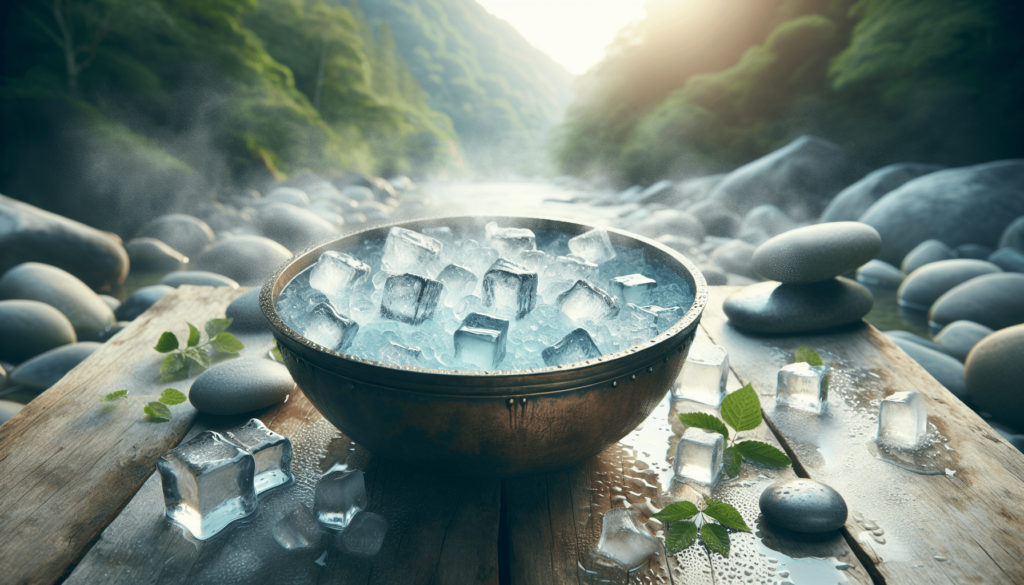
Have you ever wondered how jumping into icy cold water can affect your body? cold water immersion has gained significant attention in recent years, especially among athletes and wellness enthusiasts. Many swear by its benefits, from improved recovery to enhanced mental fortitude. Let’s dig deeper into what cold water immersion does to your body.

What is Cold Water Immersion?
Cold water immersion, commonly referred to as cold therapy or ice baths, involves submerging the body in cold water, typically below 15°C (59°F). This practice has been used for centuries in various cultures for recovery, healing, and even spiritual applications. As you consider trying it, understanding its effects on your body can help you make informed decisions.
Historical Context
The use of cold water for health benefits dates back thousands of years. Ancient civilizations, including the Greeks and Romans, incorporated bathing practices in cool water to help with various ailments and enhance overall wellness. This historical background can help you appreciate how cold water immersion has stood the test of time as a method for physical recovery and mental clarity.
Physiological Responses to Cold Water
Your body responds robustly when exposed to cold temperatures. These physiological changes can vary based on the duration of exposure, the temperature of the water, and your individual tolerance levels. Understanding how your body reacts to cold can help you harness its benefits effectively.
Blood Flow and Circulation
When you immerse yourself in cold water, your body instinctively responds by constricting blood vessels, a process known as vasoconstriction. This is your body’s way of preserving heat and protecting vital organs. The cold causes your heart rate to increase initially, leading to an initial surge in blood flow.
However, once you come out of the cold, you experience vasodilation, where blood vessels relax and expand. This cycle can help improve circulation over time, promoting better delivery of oxygen and nutrients to your muscles and organs.
Muscle Recovery
Many athletes incorporate cold water immersion into their recovery routines to soothe sore muscles and reduce inflammation. The cold temperature can numb nerve endings, reducing pain perception and allowing for quicker recovery after intense physical exertion.
During immersion, lactic acid builds up in your muscles is flushed away more efficiently, which can help ease soreness and stiffness.
Metabolic Boost
You may experience an uptick in metabolic rate when subjected to cold water. Your body needs to work harder to maintain its core temperature, leading to increased calorie consumption. While this boost might not be significant for weight loss, it can contribute to your overall energy expenditure over time, benefiting body composition.
Mental Clarity and Mood Enhancement
Cold water immersion can also have profound effects on your mental health. Many individuals report feelings of euphoria after an ice bath. This sensation is attributed to the release of endorphins, the “feel-good” hormones.
Moreover, the shock of cold water can help improve your mental resilience. Regular practice can lead to enhanced mood, reduced anxiety, and an overall sense of well-being.
Immune System Activation
Interestingly, repeated exposure to cold water may strengthen your immune system. Studies suggest that regular cold immersion can increase the levels of certain white blood cells, which are crucial for fighting infections.
This immune activation may help your body better respond to illnesses, potentially reducing sick days and boosting overall health.
Potential Risks and Considerations
While the benefits of cold water immersion are numerous, it’s essential to recognize potential risks and considerations before jumping in.
Hypothermia
Prolonged exposure to cold water can lead to hypothermia, a condition that occurs when your body loses heat faster than it can produce it. Symptoms include shivering, confusion, and fatigue, which can become dangerous if not addressed.
To mitigate this risk, it’s advised to limit immersion time to around 10 to 15 minutes, especially if you’re a beginner and not accustomed to cold temperatures.
Skin and Nerve Damage
Cold water can potentially damage your skin and nerves if exposure is excessive. You may experience numbness or tingling sensations, indicating your nerves are not responding properly. This can lead to frostbite in extreme cases, particularly on fingers and toes.
If you notice any unusual symptoms, consider exiting the cold water immediately and evaluating your experience.
Pre-existing Conditions
Individuals with specific medical conditions, like cardiovascular issues, should consult with a healthcare professional before partaking in cold water immersion. The sudden exposure to cold can cause strain on your heart; being cautious is always prudent.
How to Safely Practice Cold Water Immersion
If you’re intrigued by cold water immersion and want to try it, consider the following safety tips to ensure you do it correctly.
Start Gradually
If you’re new to cold water exposure, begin with cooler temperatures instead of jumping straight into freezing water. start with a shower on a cool setting or immerse yourself in mildly cold water for short periods. Gradually decrease the temperature and increase your immersion time as your body adapts.
Monitor Your Body’s Signals
Listen to your body. If you feel overly uncomfortable, dizzy, or cold, it’s time to exit the water and warm up. It’s essential to embrace the experience without pushing yourself into a risk zone.
Use Proper Equipment
If possible, use a thermometer to measure water temperature. Aim for water between 10°C to 15°C (50°F to 59°F) for effective immersion without risking hypothermia.
Warm Up After Immersion
After exiting the cold water, warm your body gradually. Drinking a warm beverage and moving around can help to restore your natural body temperature.

Techniques for Cold Water Immersion
There are various methods to engage in cold water immersion. Finding the right one for you can enhance your experience.
Ice Baths
Ice baths are a popular method among athletes. To prepare, fill a tub with cold water and add ice. Submerge yourself for about 10 to 15 minutes. Ice baths are highly effective in reducing muscle soreness post-exercise.
Cold Showers
If ice baths sound too intense, consider a cold shower instead. Start with a comfortable warm shower, then gradually lower the temperature. This approach allows you to control the exposure comfortably.
Natural Water Bodies
If you’re lucky enough to have access to lakes, rivers, or oceans, naturally cold water sources can provide an invigorating experience. Before diving in, check the temperature and your comfort level with outdoor conditions.
Cryotherapy
Cryotherapy, a more modern approach, involves standing in a cryo chamber where cold air circulates around your body. This method is becoming increasingly popular in wellness centers and provides a cold-immersion experience without water.
Cold Water Immersion and Athletic Performance
Athletes are among the most frequent users of cold water immersion for recovery and performance enhancement. Here are a few ways it influences athletic performance.
Improved Recovery Times
As mentioned earlier, cold water helps in flushing out lactic acid and reducing inflammation, which can ultimately enhance recovery times. Athletes who consistently use cold water immersion report feeling less sore and more prepared for their next training session.
Enhanced Endurance
Some research suggests cold exposure may contribute to improved endurance performance. By enhancing circulation and oxygen delivery to muscles, athletes may perform better under strenuous conditions.
Mental Resilience
The psychological aspect of cold water immersion can’t be overlooked. The ability to withstand discomfort and pain can greatly benefit an athlete’s mental game, providing the confidence needed to push limits during competition.

Popular Cold Water Rituals and Practices
Cold water immersion has woven its way into various cultural practices and rituals. Exploring these can give you insight into how others have embraced this practice.
Scandinavian Bathing Rituals
In Scandinavian cultures, alternating between hot saunas and cold water plunges is common. This cyclical practice enhances circulation and rejuvenates the body and mind.
Winter Swimming Clubs
Winter swimming clubs have gained popularity in various parts of the world, where individuals meet regularly to swim in icy waters, often for camaraderie as well as health benefits.
Cold Water Therapy in Sports Teams
Many professional sports teams have incorporated cold water therapy as part of their training protocols. Players will often engage in ice baths post-practice to facilitate recovery.
Conclusion
Considering all the potential benefits and risks, cold water immersion can be an incredibly powerful tool for your body and mind. Whether you’re looking to improve athletic performance, speed up recovery, or simply embrace new wellness challenges, this ancient practice has much to offer.
By approaching cold water immersion safely and thoughtfully, you can experience its full range of benefits. Remember to listen to your body, gradually adapt, and find the methods that resonate with you. Are you ready to take the plunge into a colder world?
